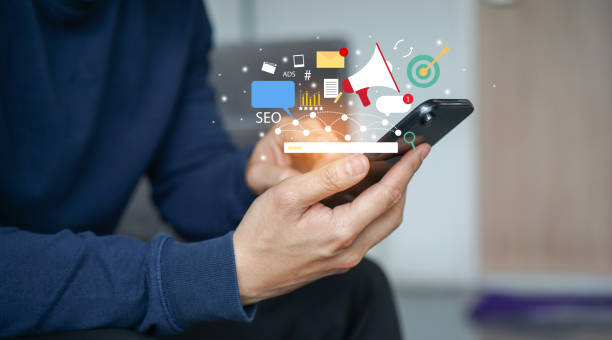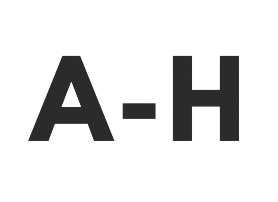
In an era dominated by smartphones, social media, and real-time analytics, traditional advertising methods like billboards may seem outdated. However, when strategically integrated with digital marketing campaigns, billboards can become powerful tools that bridge the physical and digital worlds. Combining the lasting impact of billboard advertising with the immediacy and personalization of digital marketing creates a dynamic synergy that enhances visibility, engagement, and return on investment.
Traditional marketing involves physical channels such as print media, television, and billboards, while digital marketing encompasses online platforms like social media, email, search engines, and websites. Despite their apparent differences, these two approaches can work together to create a cohesive and powerful marketing message. Integrated marketing ensures that all communication and messaging are unified across channels, maximizing the reach and effectiveness of a campaign.
The Evolving Role of Billboards
Billboards have evolved from static printed panels to dynamic digital displays capable of showing multiple messages, animations, and real-time content. These modern billboards, known as digital out-of-home (DOOH) advertising, allow brands to update messages quickly, target specific times of day, and even respond to local events or weather conditions.
What makes billboards particularly valuable in the digital age is their physical presence. While digital ads can be skipped, blocked, or scrolled past, billboards stand tall and unignorable. They offer high visibility, especially in busy urban areas, and can serve as a bold anchor for a larger marketing campaign.
Techniques for Integration
One of the simplest ways to connect billboards with digital campaigns is through QR codes and short URLs. A billboard promoting a new product can include a QR code that leads directly to a landing page, product video, or special offer. This invites immediate interaction, transforming a passive view into an active engagement.
Geo-targeting and geofencing take this integration further by allowing digital ads to respond to a user’s physical location. When someone enters a specific geographical area where a billboard is located, they can receive related digital ads on their mobile devices. This combination increases message frequency and improves brand recall.
Social media tie-ins also enhance billboard campaigns. A brand might launch a hashtag and display it on a billboard, encouraging passersby to post photos or messages using it. This strategy not only boosts social media engagement but also gives the campaign a viral component.
Hashtag campaigns can be further amplified by featuring user-generated content on digital billboards. For example, a fashion brand may invite users to post their looks with a branded hashtag, with selected posts shown live on digital billboards in major cities. This creates a feedback loop between physical and digital spaces, increasing both reach and authenticity.
Case Studies
Numerous brands have successfully integrated billboards with digital marketing. A notable example is Spotify’s year-end “Wrapped” campaign. While the campaign launched online, Spotify extended it to billboards featuring personalized and humorous user data in various cities. Each billboard encouraged social sharing and redirected viewers to Spotify’s digital platform to view their own listening stats. The blend of personalization, humor, and cross-channel promotion made the campaign a viral hit.
Another example is Coca-Cola’s “Share a Coke” campaign, which featured people’s names on bottles. Billboards prompted consumers to find bottles with their names and post selfies on social media using a hashtag. These posts were then displayed on digital billboards, blending user interaction with physical advertising space.
Benefits of Integration
Integrating billboards with digital marketing campaigns offers several benefits. First is increased engagement. Billboards alone may create awareness, but when combined with digital calls to action, they encourage deeper interaction, like scanning a QR code or participating in a contest.
Second, integrated campaigns achieve a broader reach. A billboard in a high-traffic area captures the attention of thousands, while digital extensions continue the conversation online, reaching audiences across devices and platforms.
Third, the integration allows for real-time analytics and retargeting. Marketers can track how many people scanned a code, visited a site, or used a campaign hashtag. This data not only measures campaign success but also enables follow-up targeting, such as showing digital ads to those who interacted with the billboard.
Challenges and Considerations
Despite the benefits, integrating billboards with digital campaigns comes with challenges. One major concern is cost. Digital billboards and advanced technologies like augmented reality or geofencing can be expensive. Brands need to assess whether the added investment will yield proportional returns.
Logistics are another challenge. Billboards are location-specific, and coordinating timing, creative elements, and digital triggers requires careful planning. Also, measuring conversions from offline to online can be tricky. While QR codes and unique URLs help, not all engagement is trackable, which can limit attribution accuracy.
Why Billboards Still Matter in the Digital Age
In today’s crowded digital environment, physical billboards offer a tangible, large-format presence that digital ads can’t replicate. They command attention, build brand awareness, and serve as landmarks in the real world. When integrated with digital channels, they become touchpoints in a broader customer journey, reinforcing messaging and prompting interaction.
Digital Tools That Enhance Billboards
Emerging technologies are making billboard integration even more impactful. Mobile interaction is at the forefront, with consumers scanning codes, texting shortcodes, or using apps in response to billboard messages.
Augmented Reality (AR) offers immersive experiences. A billboard can feature an AR marker that, when scanned, triggers a 3D animation or virtual product demo on the viewer’s phone. This extends the experience beyond the physical space and deepens user engagement.
NFC and Bluetooth connectivity allow billboards to communicate directly with nearby mobile devices. For example, a bus stop ad might push a notification about a nearby store sale to a person’s phone. While this requires user permission, it exemplifies the potential of personalized and location-aware messaging.
Cross-Platform Campaign Ideas
To fully leverage billboard-digital integration, brands can implement creative cross-platform campaigns. One idea is influencer tie-ins. A billboard might feature a well-known social media personality, driving viewers to their online content, where they promote the brand in more detail.
Another tactic is to encourage user-generated content via billboard prompts. Asking people to share photos or stories on social media with a specific hashtag increases online buzz and may lead to content being featured on the brand’s platforms or billboards.
Contests and call-to-actions are also powerful. A billboard might advertise a digital contest, with instructions to visit a site or post a specific message for a chance to win. This drives traffic, increases online engagement, and generates leads.
Measuring Effectiveness
To evaluate the impact of integrated billboard campaigns, marketers can use a variety of analytics tools. URL tracking parameters, QR code scans, and social media mentions all offer measurable data. Platforms like Google Analytics and campaign-specific dashboards help correlate billboard exposure with digital outcomes such as site visits, signups, and sales.
Conversion tracking remains a key focus. Brands can offer billboard-exclusive promotions, like discount codes, to determine how many users took action after seeing the ad. Over time, these insights refine future campaigns for greater effectiveness.
Final Thoughts
Billboards are far from obsolete. When combined with the tools and strategies of digital marketing, they become even more powerful. The key lies in creativity, coordination, and data-driven execution. Whether through QR codes, social media prompts, or interactive technology, billboards can now do more than just inform — they can connect, engage, and convert. As marketing continues to evolve, the synergy between physical and digital channels will define the most memorable and effective campaigns.

Leave a Reply